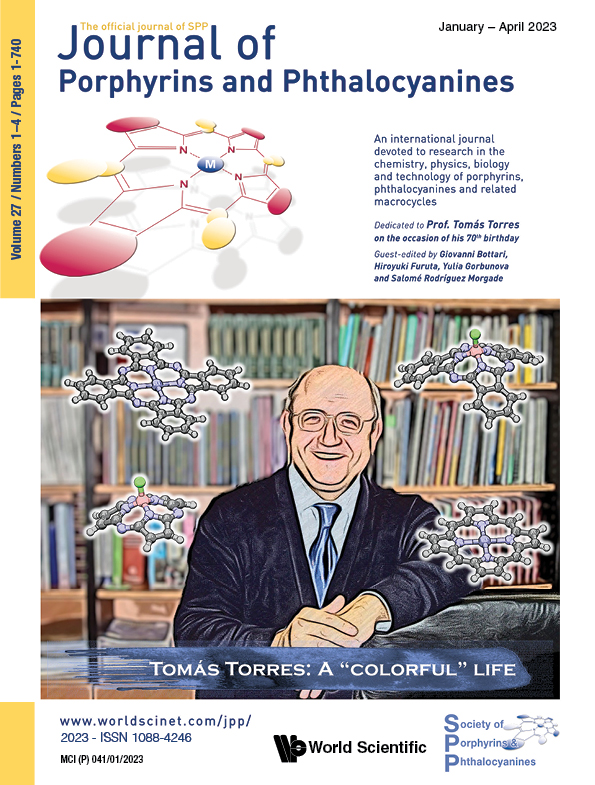Syntheses and properties of amphiphilic zinc(II), nickel(II), and palladium(II) phthalocyanines with eight tri(oxyethylene) chains introduced at non-peripheral αα positions
Abstract
Amphiphilic zinc(II) (1), nickel(II) (2), and palladium(II) (3) complexes of 1,4,8,11,15,18,22,25-octakis(1,4,7,10-tetraoxaundecyl)phthalocyanine were synthesized and characterized by elemental analysis and MALDI-TOF mass and 1H NMR spectroscopies. Electronic absorption spectra showed aggregation of the phthalocyanine molecules in H2H2O for 2 and 3, while the monomeric form for 1 in H2H2O, and 1, 2, and 3 in CH2Cl2CH2Cl2. The cyclic voltammograms of 1, 2, and 3 in CH2Cl2CH2Cl2 showed that oxidation of the phthalocyanine ring occurs easily in these complexes. This may be due to the energetically increased HOMO, coming from the deformation of the phthalocyanine ring. Steric hindrance between the αα-introduced 1,4,7,10-tetraoxaundecyl groups (tri(oxyethylene) chains) within the phthalocyanine molecule gives rise to the deformation of the phthalocyanine ring, which decreases the aggregating nature of the present complexes.

Dedicated to Prof. Tomás Torres on the occasion of his 70th birthday
Handbook of Porphyrin Science now available in 46 volumes


